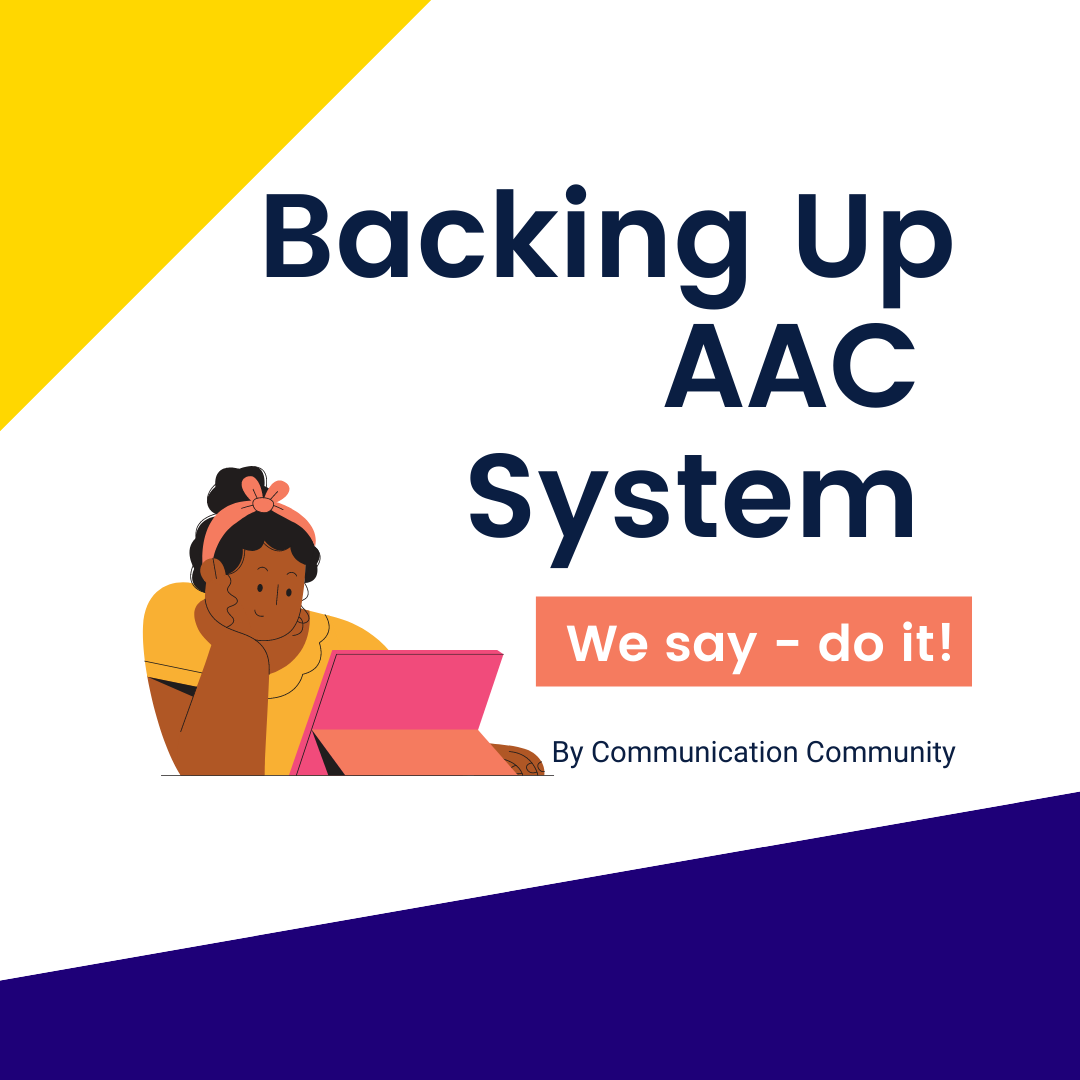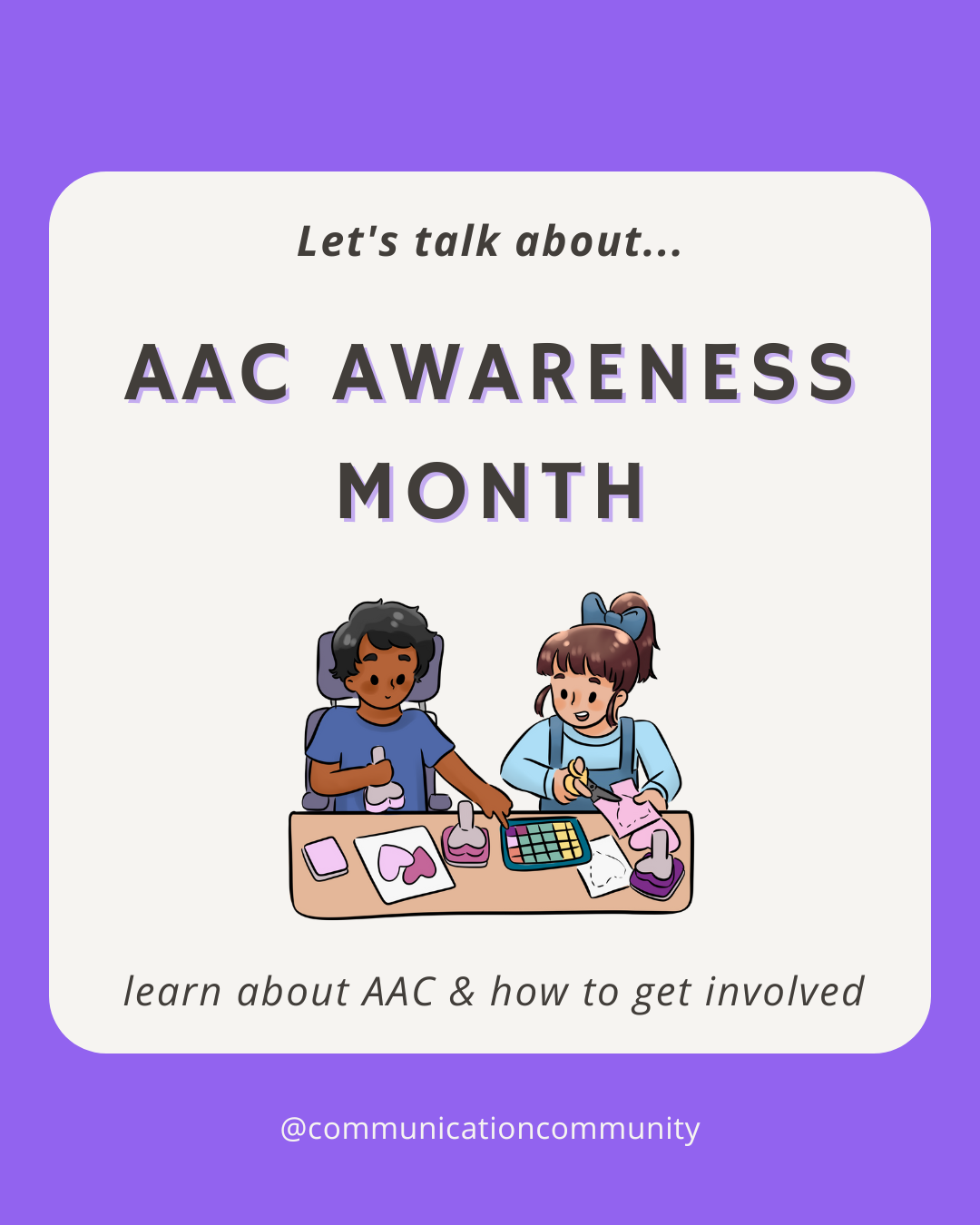High Tech AAC
Generally speaking, high tech augmentative and alternative communication (AAC) is typically presented as some sort of speech generating device (SGD), such as a tablet with a software program for communication (think: iPad or Accent device). This program may have multiple pages and folders (e.g., pressing “School” brings you to a page with school vocabulary, pressing “Food” brings you to a page with food options). A high tech AAC system may also look more like a computer that has software programs that allow you to type, control a mouse, send emails, and browse the Internet.
Dedicated vs. non-dedicated devices
Sometimes SGDs are dedicated devices, where the software is only for SGD purposes (think: Tobii Dynavox devices). Some SGDs are non-dedicated devices, where you can download software for SGD purposes, but also use separate apps for email, games, and more (think: an iPad with downloaded ProloQuo2go app).
Both dedicated devices and non-dedicated devices give you the option of backing up the communication software on the system. Pro tip - you should do it!
Why Should You Backup AAC?
As you can see, high tech devices/SGDs are complex systems that require a lot of programming. Oftentimes, AAC users have used their devices for many years and their communication software has grown with their developing language and environmental wants and needs through adding pages, folders, and buttons. Damage to a device or update on a software can cause these customized features to be lost. This is one of the many reasons to backup your/your client/loved one’s system! Another reason is the TIME it takes to initially program (though as SLPs we are always happy to do it) and to reprogram all of the data that has been deleted. As a verbal communicator, we would feel lost if one day we had access to a robust language system with all of our specific people, places, and phrases, and another day we were given a template of what a basic language system “should” look like. Individuals who use AAC deserve to have their language protected and backed up too!
Backing up AAC
Usually there is a different procedure for backing up one’s AAC system depending on the software/program the individual is using. If it is a software that is downloadable via the App Store on an iPad, some sort of iCloud or iShare process is typically offered. Dropbox has also become a very common method. For dedicated devices, such as Accent systems, I have used USB drives to save vocabulary and backup. For visual learners (like me), YouTube also offers some great walkthroughs of backing up certain softwares - just be sure you are looking at the most recent video available, as methods frequently change with software/device updates. Below we have listed some of the more commonly used softwares and links to backup walkthrough options:
LAMP Words for Life
-iTunes
-Dropbox
-iSharePRC
TouchChat HD & TouchChat with WordPower
-Google Drive
-iShare (free 365 day subscription)
-iTunes
-Dropbox
ProloQuo2Go
-Google Drive
-Dropbox
Speak for Yourself
-iTunes
-Dropbox
GoTalk Now
-iTunes
-Computer
-Dropbox
-Google Drive
Tobii Dynavox (dedicated device)
-USB upload/download
Empower (dedicated Accent device)
-USB upload/download
PRiO
-iTunes
Additional Prenetrom backup support can be found here
How Often Should I Backup the User’s AAC System?
So this would vary for me. For the most part, if I was in a clinic or school setting, I would make it a point to back up each client/student’s system on the first week of each month. This worked with my schedule and just in terms of timing for all of the individuals I was treating. I had an Excel spreadsheet to help me keep track of this. There were also some clients/students that wouldn’t require edits to their vocabulary for months at a time. In that case, I wouldn’t need to do anything, but I would mark on the Excel sheet “no edits were made.” I should mention that there were some exceptions; such as when I made significant vocabulary/template modifications or spent great amounts of time for single edits. In that case, I usually backed up immediately after the changes were made.
Citations/further resources:
https://www.attainmentcompany.com/mwdownloads/download/link/id/1306/
https://www.assistiveware.com/support/proloquo2go/protect-share/export-backups-dropbox-google
https://touchchatapp.com/support/articles/transferring-vocabulary-files
https://aacapps.com/support/reference/how-do-i-make-a-backup-of-my-wfl-vocabulary-file
https://www.prentrom.com/support/prio/saving---loading-vocabulary/backing-up-vocabulary-file
https://www.tobiidynavox.com/support-training/faq-from-salesforce/how-to-backup-and-restore-locally/



![How to Write AAC Goals [with goal bank]](https://www.communicationcommunity.com/content/images/2024/03/How-to-Write-AAC-Goals---ghost-cover.png)
![How to Write Neurodiversity-Affirming Speech Therapy Goals [with goal bank]](https://www.communicationcommunity.com/content/images/2023/12/How-to-Write-ND-Goals---ghost-cover.png)

![What is Modeling Without Expectation? [AAC resource]](https://www.communicationcommunity.com/content/images/2023/03/1.png)
